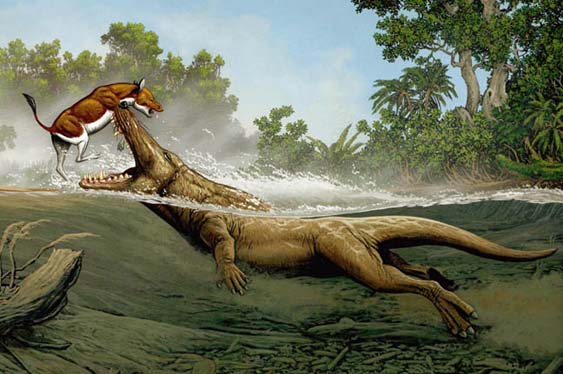Thewissen, J. G. M., Cohn, M. J., Stevens, L. S., Bajpai, S., Heyning, J., & Horton Jr, W. E. (2006). Developmental basis for hind-limb loss in dolphins and origin of the cetacean bodyplan. Proceedings of the National Academy of Sciences of the United States of America.
Among mammals, modern cetaceans (whales, dolphins, and porpoises) are unusual in the absence of hind limbs. However, cetacean embryos do initiate hind-limb bud development. In dolphins, the bud arrests and degenerates around the fifth gestational week. Initial limb outgrowth in amniotes is maintained by two signaling centers, the apical ectodermal ridge (AER) and the zone of polarizing activity (ZPA).
Our data indicate that the cetacean hind-limb bud forms an AER and that this structure expresses Fgf8 initially, but that neither the AER nor Fgf8 expression is maintained. Moreover, Sonic hedgehog (Shh), which mediates the signaling activity of the ZPA, is absent from the dolphin hind-limb bud. We find that failure to establish a ZPA is associated with the absence of Hand2, an upstream regulator of Shh.
Interpreting our results in the context of both the cetacean fossil record and the known functions of Shh suggests that reduction of Shh expression may have occurred 41 million years ago and led to the loss of distal limb elements. The total loss of Shh expression may account for the further loss of hind-limb elements that occurred near the origin of the modern suborders of cetaceans 34 million years ago.
Integration of paleontological and developmental data suggests that hind-limb size was reduced by gradually operating microevolutionary changes. Long after locomotor function was totally lost, modulation of developmental control genes eliminated most of the hind-limb skeleton. Hence, macroevolutionary changes in gene expression did not drive the initial reduction in hind-limb size.


No comments:
Post a Comment